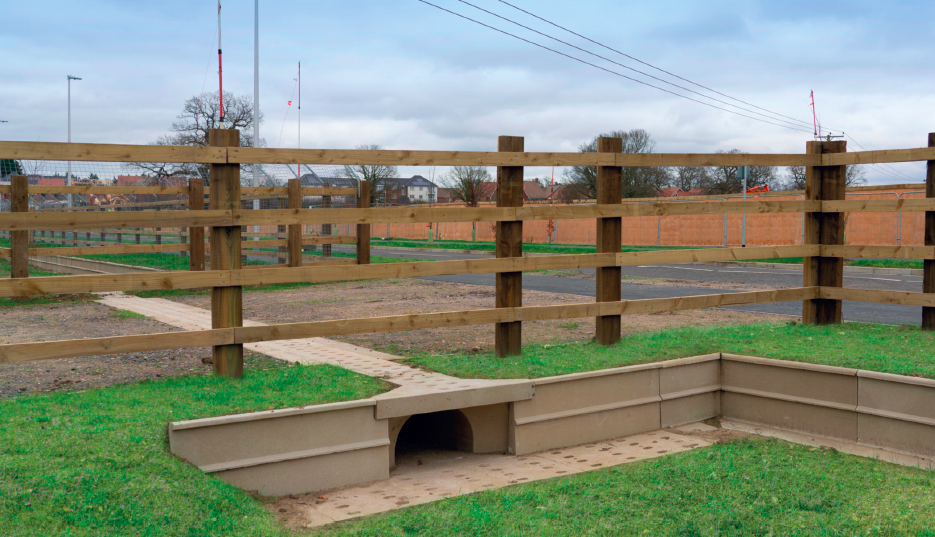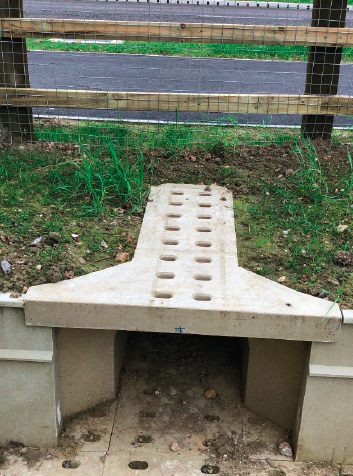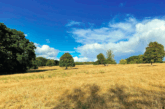
The Biodiversity Net Gain law is reaching its first major milestone – its one-year anniversary. With a need to demonstrate a minimum 10% uplift in biodiversity for almost all schemes, how can wildlife mitigation solutions contribute to the wider biodiversity enhancement of a site? Here, Terry Wilkinson, Specialist Design & Application Engineer at ACO Water Management, dives into the mix of solutions housebuilders can deploy to help wildlife thrive.
Officially made mandatory in England for major developments in February 2024, and then subsequently for small sites two months later, the Biodiversity Net Gain (BNG) law is a landmark piece of legislation that affects nearly every housebuilder.
Any development with ten or more houses is typically classed as a major scheme. Meanwhile, small sites are those with nine houses or fewer on a site less than one hectare in size. Both must now evidence a minimum 10% uplift in biodiversity to be granted planning permission, and all developments (unless they are exempt) must also be managed and maintained over a 30-year period to comply with BNG.
However, 12 months on from BNG becoming a legal obligation, it brings up an important question – where are we now, and are housebuilders and developers enacting change?
BNG – Checking the current landscape
The evidence suggests that there is still much work to be done. A report commissioned by Wild Justice, ‘Lost Nature: Are housing developers delivering their ecological commitments?’ found worrying gaps in implementation and enforcement of biodiversity improvements.
After surveying 42 major housing developments across five Local Planning Authorities, equating to 6,000 houses and 291 hectares of land, it found that only half of the ecological enhancements (53%) that had been promised were actually on sites when they visited.
Going deeper, the not-for-profit nature conservation specialists uncovered a worrying trend for missing wildlife mitigation measures. These include hedgehog highways (83% missing), bat and bird boxes (both 75% missing), invertebrate boxes (100% missing), and refuges for reptiles and hibernacula (85% missing). It is important to note that these findings were made under the 2012 biodiversity requirements.
To prevent this from reoccurring with future developments, much more education and action is required, especially with the government pushing 1.5 million homes to be delivered by 2030.
Supporting housebuilders’ BNG goals
Of course, the BNG law laid down last year is still relatively fresh, and ACO is actively supporting developers to achieve their BNG goals to deliver change.
There are many innovative ways that housebuilders can help protect habitats and encourage wildlife to thrive. However, it is often not as simple as installing wildlife habitat boxes or tunnels, and hoping for the best. The devil is in the detail, as the saying goes, and this is definitely true of wildlife solutions to ensure they work in harmony for people and animals.
For example, housebuilders should aim to avoid using cementitious concrete-based wildlife tunnels, especially if their purpose is to assist amphibians like newts, frogs, and toads to cross under roads safely. The reason is that the dry, caustic properties of concrete can be toxic to these animals. Tunnels should also have slots to allow air and light through, as studies have shown animals may avoid tunnels if they are dark and they cannot see from one side to another. Concrete can also be harmful as it is porous and can draw moisture from amphibian’s skin if in direct contact. For this reason, ACO’s wildlife solutions and Climate Tunnels are made from a polymer concrete that is both non-toxic and non-absorbent.
Conversely, wildlife solutions must also be safe for humans and road traffic. For these reasons, ACO can adapt its wildlife solutions to prevent shoe heels becoming lodged in slots (see photo), as well as perform skid and slip tests, if needed.
Most importantly, tunnels have to be durable, especially if they will be installed within the surface level of the road where they will be subjected to heavy vehicular traffic. If not correctly specified, a tunnel can fail prematurely, making it both unsafe for people, vehicles, and animals, as well as bringing costly remediation works. Here, tunnels with a Load Class D 400 rating, certified to BS EN 1433:2002 are best practice and developers should actively seek these solutions.
A case study in Ashridge Farm
As the housebuilding industry looks for ways to mitigate its impact on biodiversity, Ashridge Farm in Wokingham is one highways and housebuilding project that developers can look to. Led by Balfour Beatty, the scheme included several innovative solutions to help enhance and protect local habitats. Linking a new housing estate to the wider road network, the contractor called upon ACO Water Management to establish safe routes for the animals when navigating roads.
ACO’s Climate Tunnel was chosen for the development, which can be installed flush with or below the road surface. For Ashridge Farm, both installation options were selected. The slotted ACO Climate Tunnel was installed at surface level, offering ambient conditions between the tunnel and open air thanks to the natural light and moisture levels achieved through the holes. A second ACO Climate Tunnel was installed underneath the road, offering an additional safe passage for the animals.
The tunnels were complemented with ACO’s Guide Walls, which help prevent small animals from climbing into the danger area. One key feature of the ACO Guide Wall is that it suppresses vegetation growth, providing a clear pathway for small animals. Balfour Beatty also introduced a range of biodiversity habitats across the project, including ponds, and soft landscaping, these all now work together to enhance the local habitats, and help them flourish.









